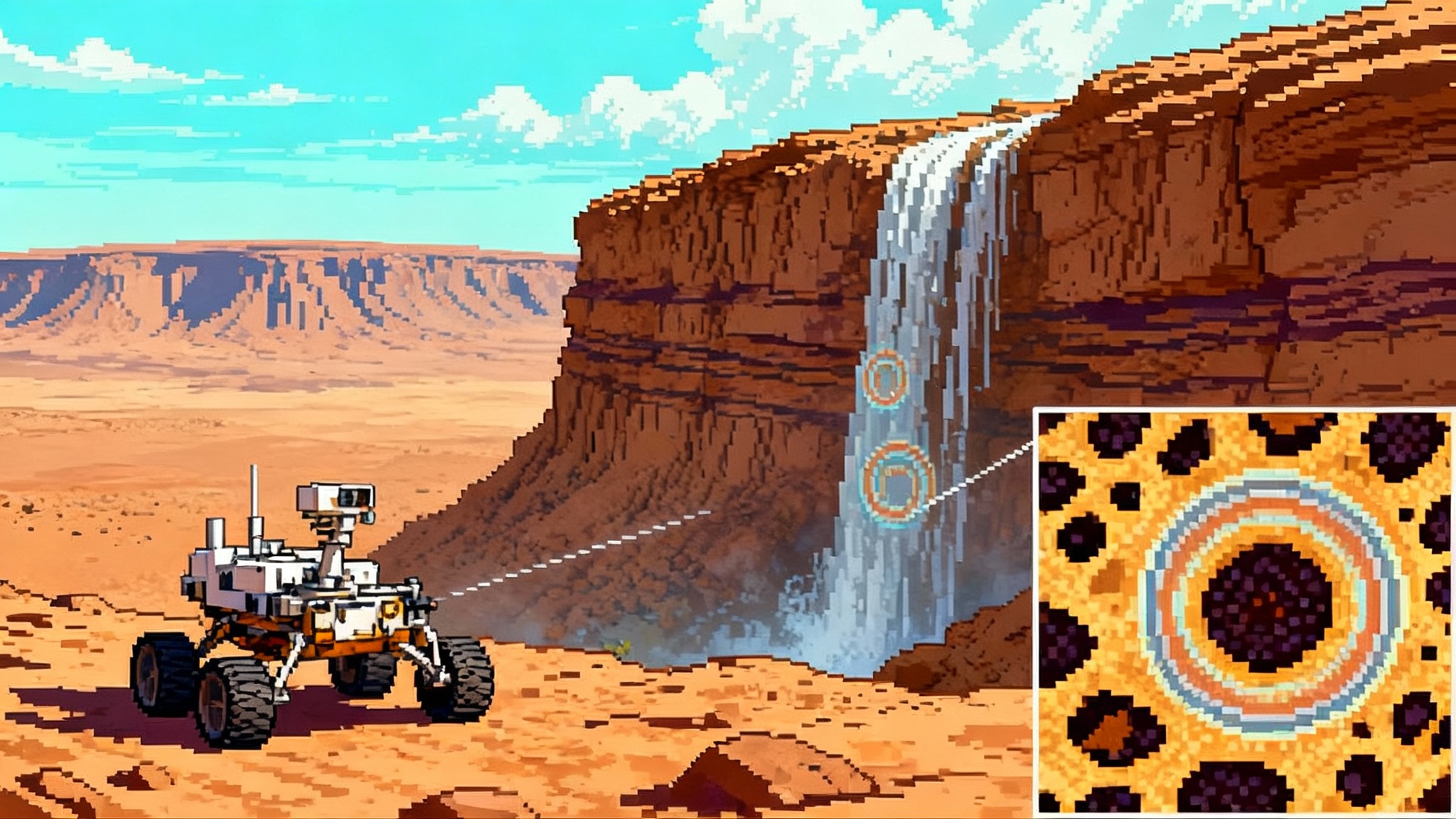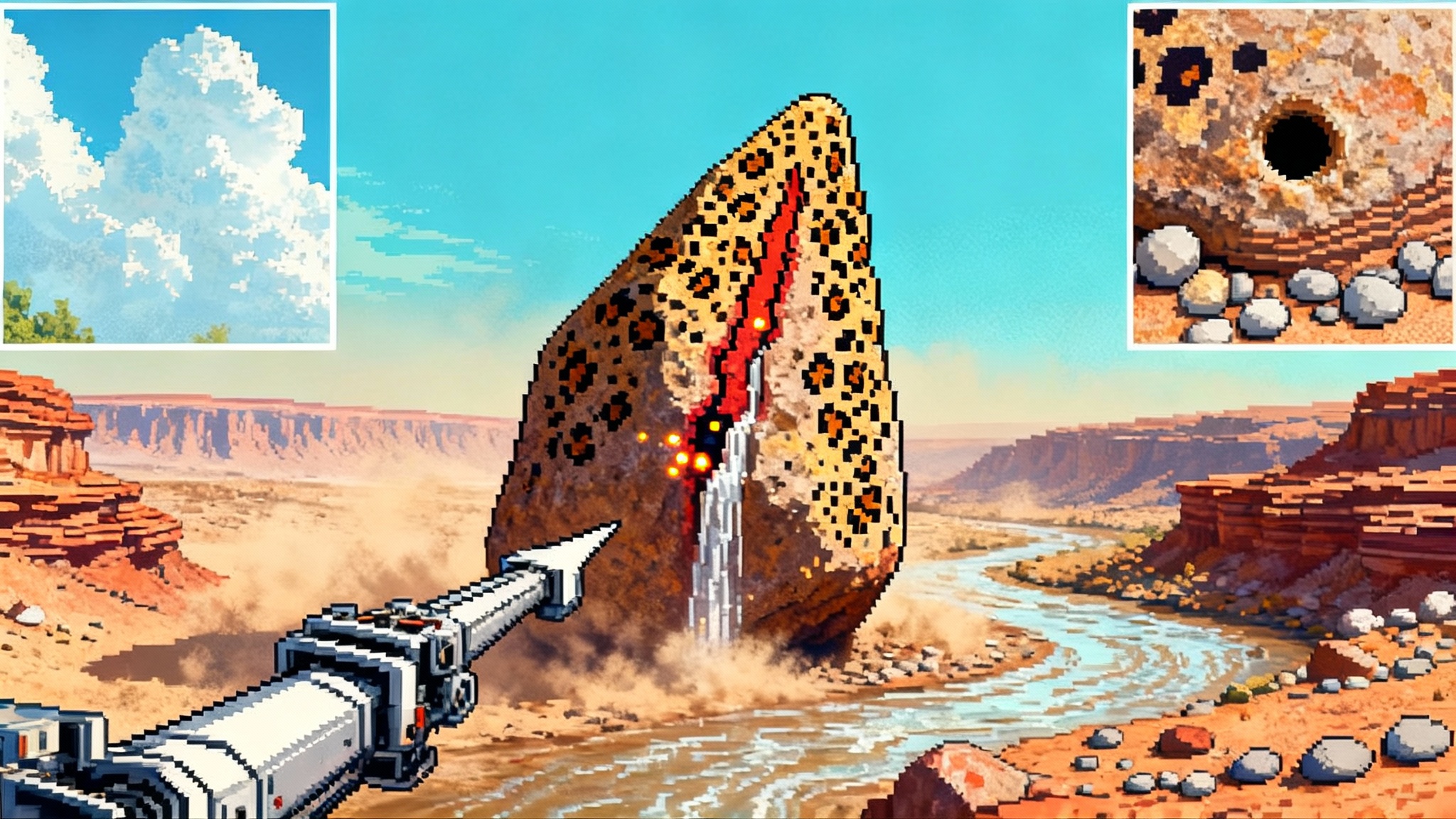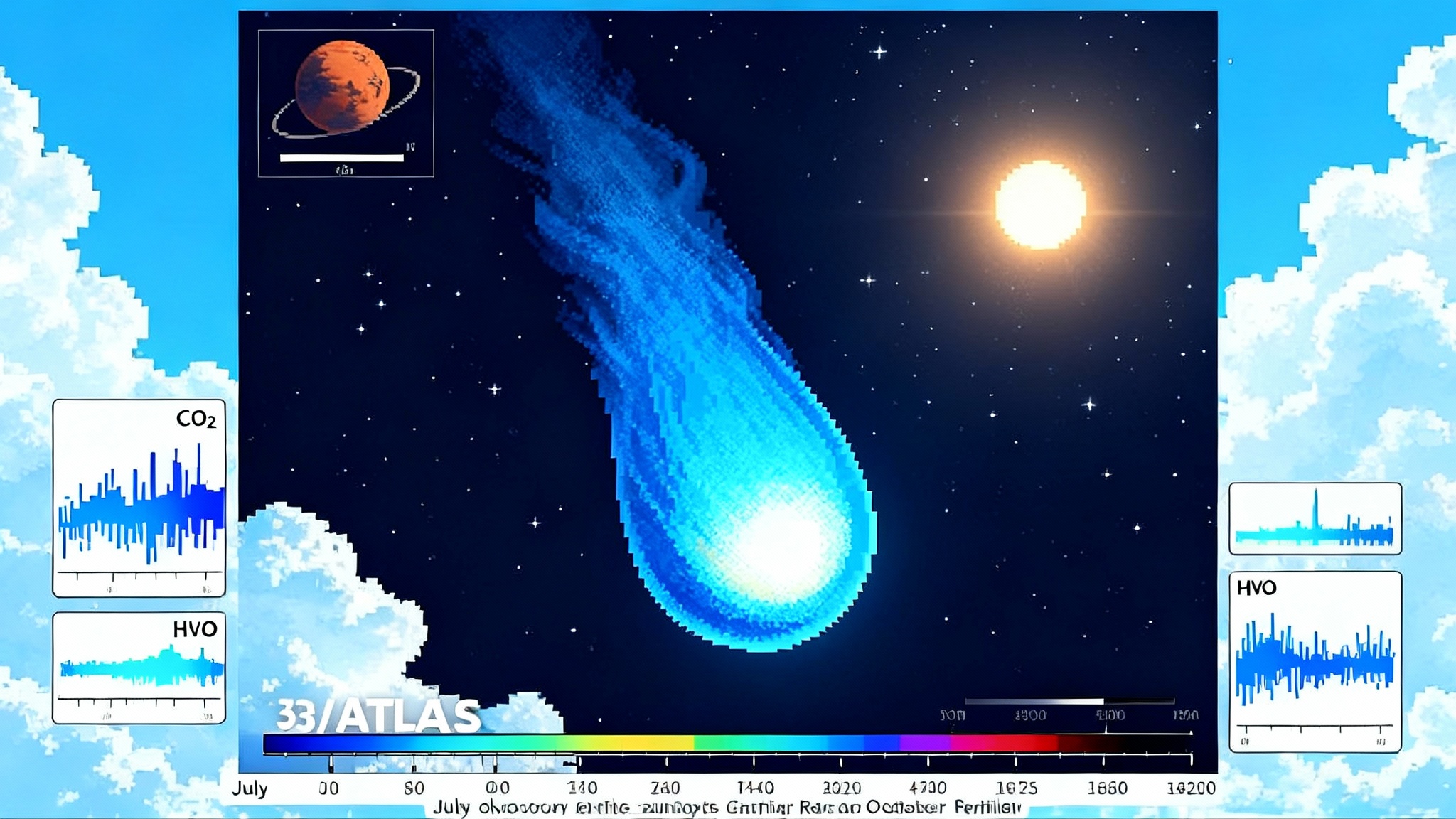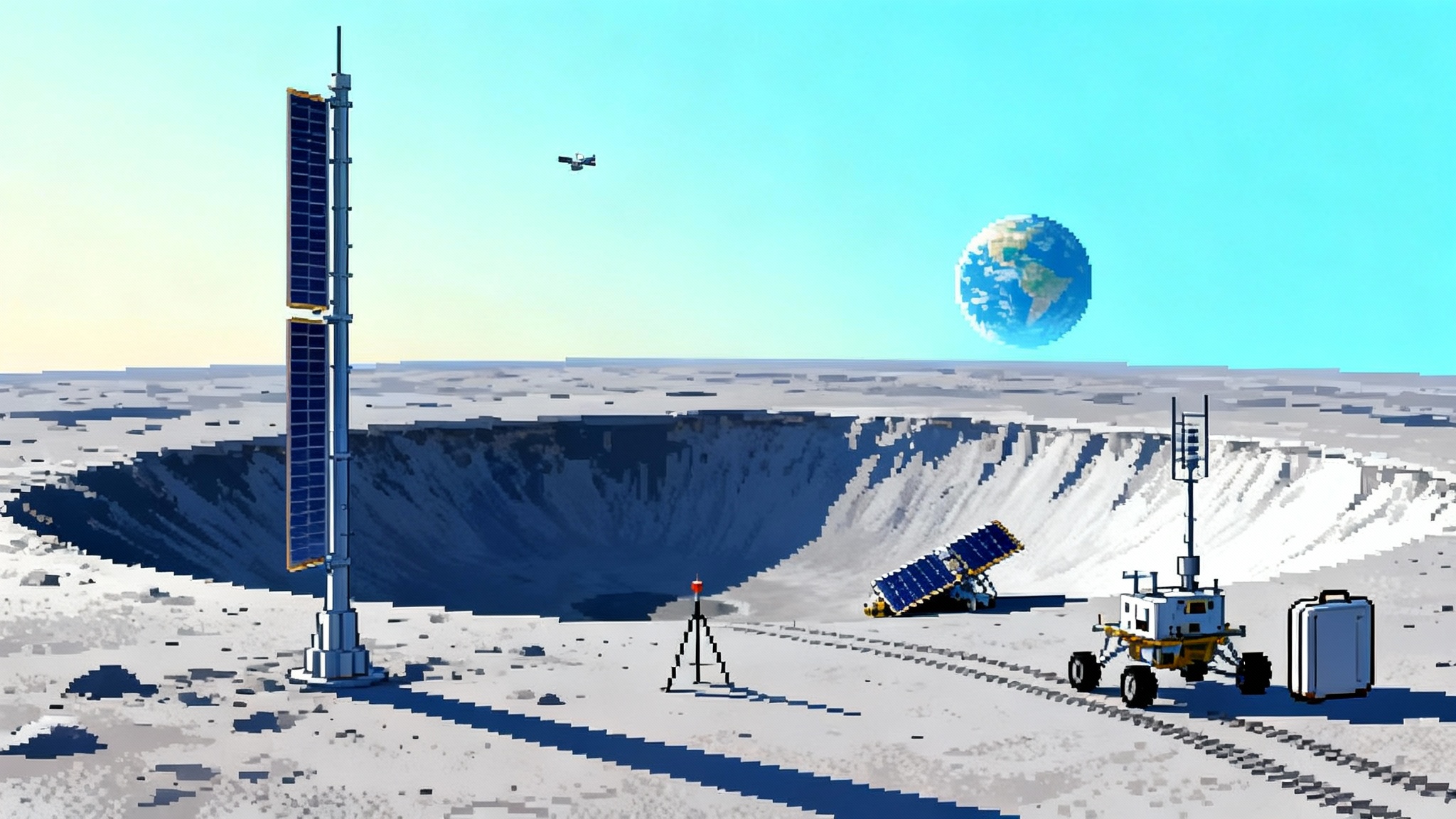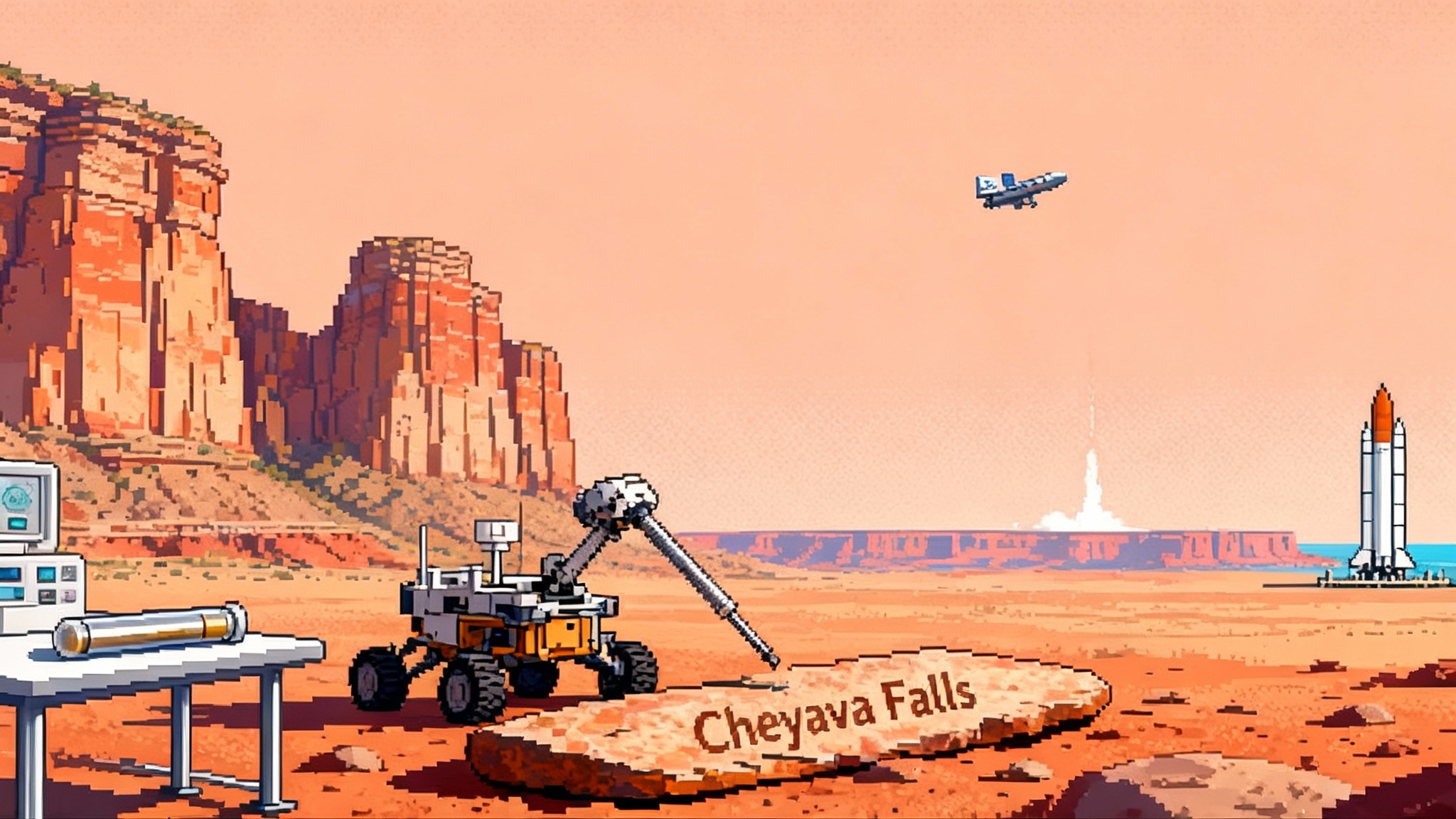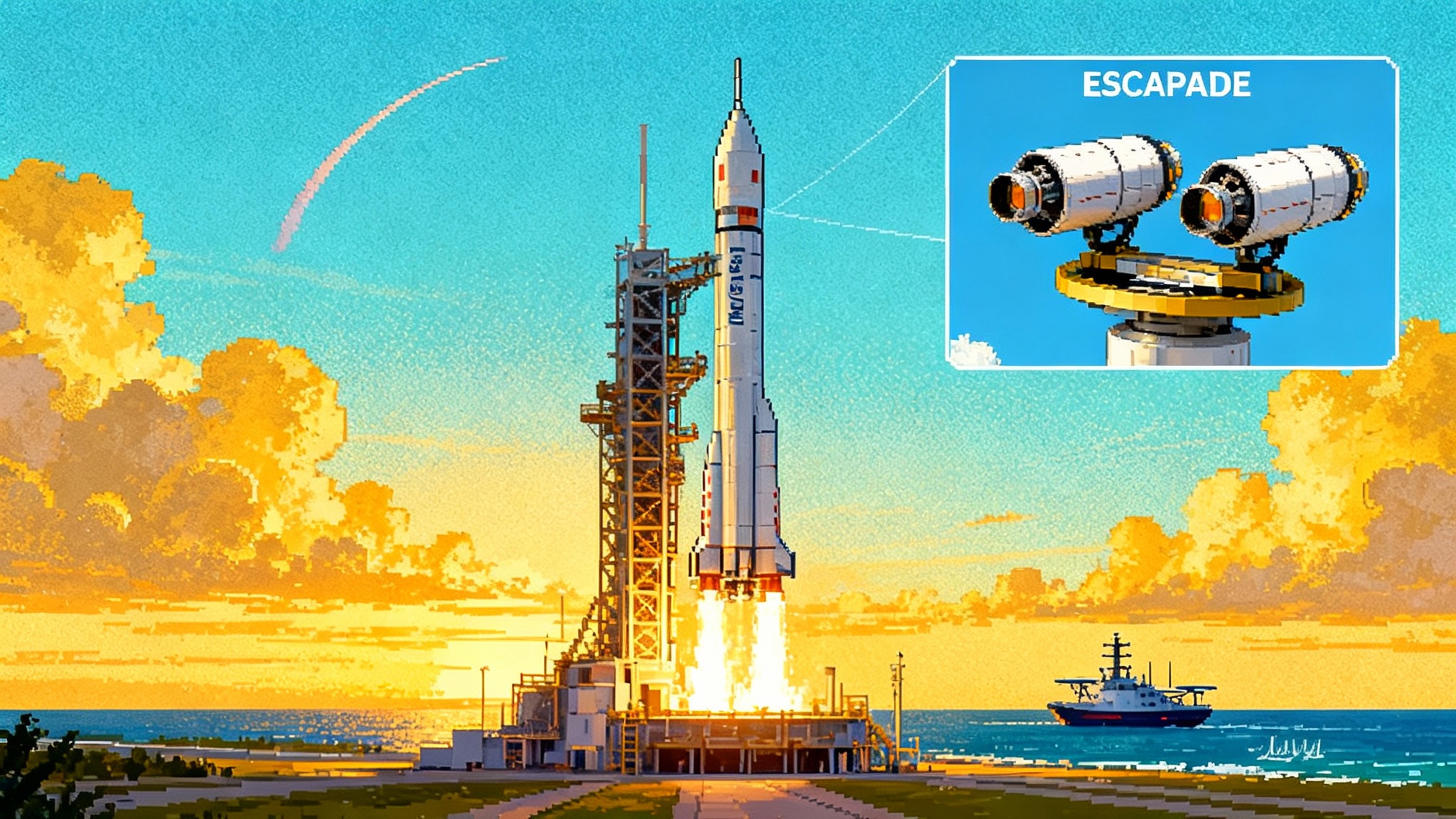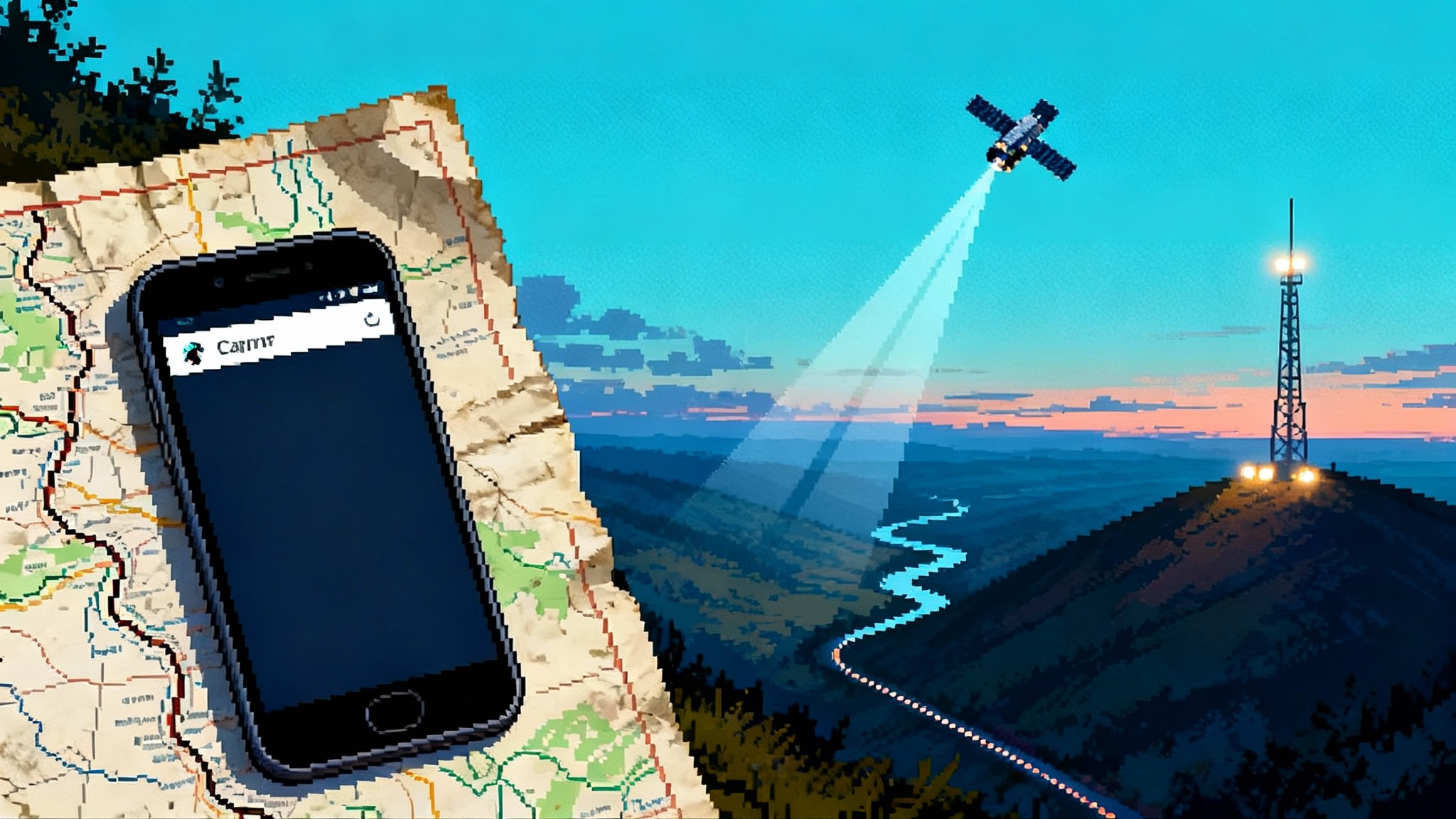Inside the Moon’s Two Faces: Chang’e‑6’s Far‑Side Secrets
Fresh analyses of Chang'e 6 show the Moon's far side is drier and chemically distinct, with volcanism that persisted for billions of years and a magnetic field that briefly revived. Here is how that reshapes water hunts and south pole site selection for Artemis and ILRS.
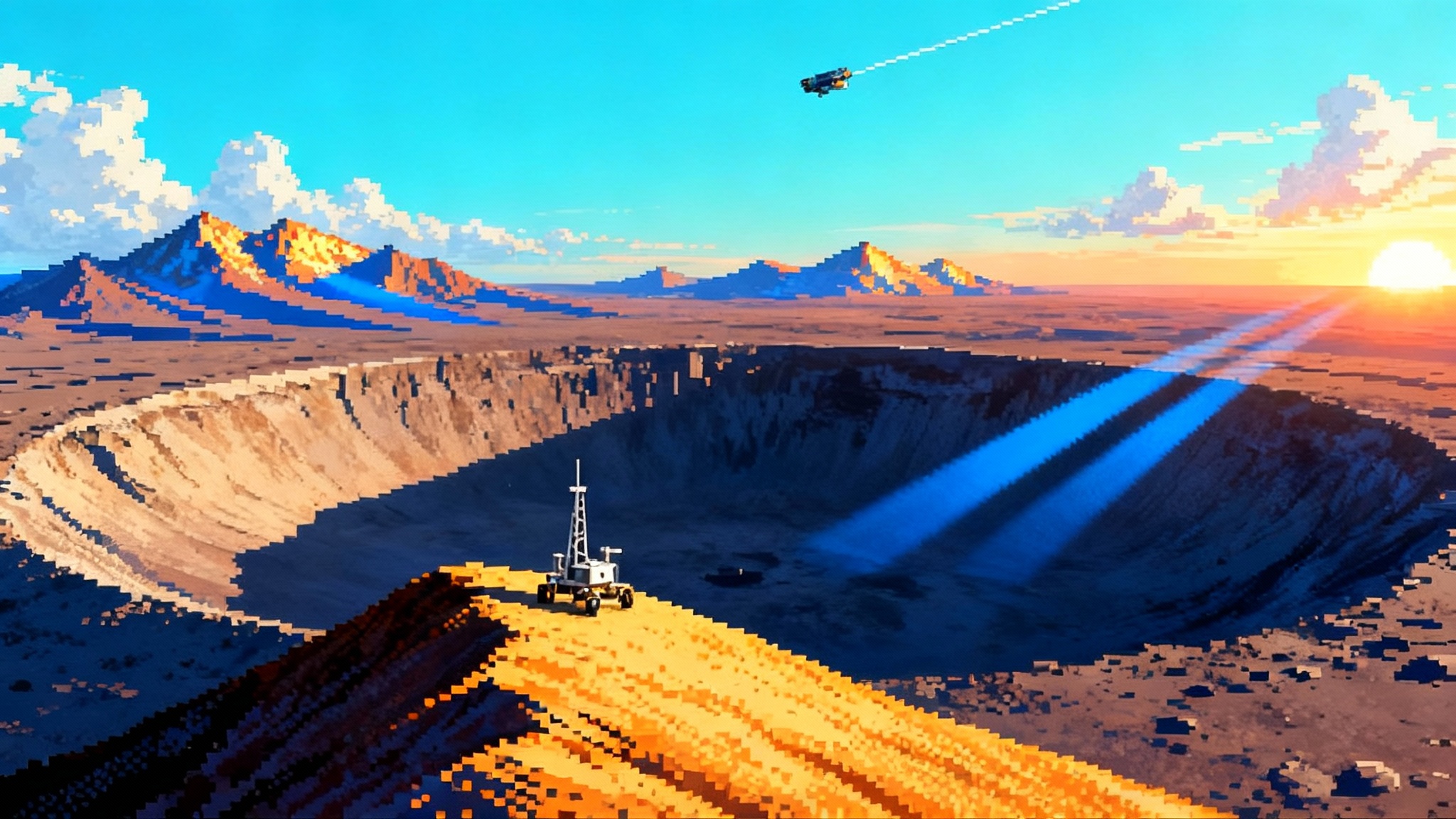
The first handful that changed the story
In June 2024, China’s Chang'e 6 mission delivered the first material ever returned from the lunar far side. Twelve months later, the first wave of peer‑reviewed papers arrived and the big picture came into focus. The samples indicate it is significantly drier, its mantle source is unusually depleted in the elements that drive melting, its volcanic activity lasted longer than many expected, and its magnetic field seems to have rebounded around 2.8 billion years ago. For a compact overview of the new analyses, see the CAS summary from July 2025. For more context on the science stakes, see our far side deep dive.
Why the far side looks dry
Water on the Moon exists in several forms. There is ice in permanently shadowed craters near the poles. There is hydroxyl bound in minerals. There are trace volatiles trapped in beads of quenched volcanic glass. The Chang'e 6 team set out to estimate the intrinsic water in the mantle source that fed far‑side lavas. Their conclusion is stark: the mantle beneath the South Pole‑Aitken basin appears extremely water‑poor compared with typical estimates from the near side.
What could strip the far‑side mantle of water and other volatiles? The leading players are:
- A cataclysmic beginning. The South Pole‑Aitken impact excavated deep crust and mantle early in lunar history. A shock that large can drive off volatiles and redistribute incompatible elements that normally feed later melting. If the far‑side mantle lost its heat‑producing ingredients and water during that event, it would stay drier for the long haul.
- A hemispheric geochemical split. The near side hosts the Procellarum KREEP Terrane, rich in potassium, rare earths, and phosphorus. These ingredients ride the melt and linger in the crust and upper mantle, boosting heat production and making it easier to generate volcanism. The far side has far less of this. Chang'e 6 samples reinforce that imbalance by pointing to an ultra‑depleted mantle source.
- A thicker crust almost everywhere else. Outside South Pole‑Aitken, the far side carries a thicker anorthositic crust. Thick lids make it harder for magma to reach the surface, which limits the recycling of interior volatiles into surface reservoirs.
The upshot is that the far side’s interior appears less able to create and vent water‑bearing magmas. That shifts expectations for where to find usable water. It tilts the odds away from interior‑sourced water on the far side and toward deposits delivered by comets and asteroids or trapped from the solar wind in polar cold traps.
Chemistry that does not match the near side
The fragments in the Chang'e 6 soils tell a consistent chemical story. Compared with basalts from the near side, the far‑side basalts at the landing site are low in titanium and come from a mantle source that is depleted in incompatible elements. Those are the elements that prefer to live in the melt rather than in solid crystals. When a mantle is ultra‑depleted, it means melts have already passed through and stripped out the elements that make future melting easier. A mantle like that needs either extra heat, exceptional thinning of the crust, or another unusual trigger to keep producing lava.
That chemistry helps explain why the far side has fewer seas of dark basalt. It also reveals that the famous lunar dichotomy is not just a surface look. It is rooted in how each hemisphere’s interior evolved.
Long‑lived volcanism where the crust is thin
If the far side is depleted, why did it erupt at all? The ages in the Chang'e 6 samples bracket two key episodes, roughly 4.2 and 2.8 billion years ago. The landing site sits within the South Pole‑Aitken basin where the crust is thinned, which makes it the most likely place for deep melts to punch through. Even a mantle that is short on heat‑producing elements can generate magmas if the lid above is cracked, thinned, and preheated.
That persistent volcanism matters for two reasons. First, it shows that the Moon’s far side stayed geologically active for at least 1.4 billion years. Second, it forces modelers to explain how melt could percolate and pool without the near side’s KREEP‑driven heat budget. The likely answer is a combination of thin crust, localized thermal anomalies left by the basin‑forming impact, and slow cooling in the deep interior.
The ages also help recalibrate the way we date lunar surfaces from orbit. Crater counts rely on a small set of sample‑dated surfaces to anchor the clock. Every new rock age from a new terrain tightens that calibration and improves the way we estimate ages across the Moon and beyond.
A magnetic field that flickered back to life
Paleomagnetic measurements on the far‑side basalts indicate a surprising rebound in the Moon’s global magnetic field around 2.8 billion years ago, after earlier studies had suggested a long decline. That finding implies the lunar dynamo did not simply fade in a straight line. Instead it may have switched on and off as interior conditions changed. Possible drivers include a basal magma ocean conducting heat and stirring near the core, precessional wobble pumping energy into the fluid core, and evolving core crystallization.
Why should explorers care? A magnetic field, even a weak one, changes how the solar wind implants hydrogen and other ions into the surface. Over hundreds of millions of years that affects how and where hydroxyl builds up, how quickly surfaces weather, and how volatiles migrate. The dynamo’s flicker adds nuance to models of lunar water budgets and surface alteration.
What this does to Moon stories we tell
The classic narrative starts with a giant impact that created a global magma ocean. Crust floated to the top. Denser iron sank to the core. As the ocean froze, incompatible elements pooled at the top of the mantle. That last layer became a heat‑rich source that powered later near‑side volcanism. The far side, by contrast, got a thicker crust and less of the heat‑rich mix.
Chang'e 6 sharpens and complicates this picture. The far side’s mantle under South Pole‑Aitken looks ultra‑depleted. Its water content is lower than most near‑side estimates. Volcanism persisted in thin‑crust corridors, but the chemistry indicates a mantle that had been wrung out early. A late rebound in the dynamo suggests interior energy sources that flickered rather than fading smoothly. The simplest synthesis is that the far side was sculpted by a brutal early impact that both thinned the local crust and bled its mantle of volatiles and incompatible elements, while the near side retained a richer, hotter mantle source that fueled broader seas of lava.
For formation models, that strengthens hemispheric asymmetry as a first‑order feature. Any model of the Moon’s early evolution now needs to explain not just why the near side has more KREEP and thinner crust in places, but also why the far side beneath South Pole‑Aitken is so depleted and dry and how volcanism prolonged there anyway.
Where to hunt for usable water now
Let’s translate the lab results into a field guide for resource prospecting.
- Interior water looks scarce beneath the far‑side South Pole‑Aitken region. Do not count on deep drilling in far‑side basalts to deliver easy water.
- Polar ice remains the prime target for in‑situ resource use. Permanently shadowed regions can trap water delivered by comets, asteroids, and solar wind implantation. Their stability depends on cold temperatures and very low sunlight, not on the far side’s interior water budget.
- Best early mining candidates are PSR margins that offer both access to ice and near‑continuous sunlight on nearby ridgelines for power. That geometry minimizes treks into the coldest pits and simplifies thermal management. See lessons from 2025 pole landings.
- Expect patchy hydroxyl in sunlit regolith if the dynamo flickered at 2.8 billion years. Prospecting sensors should be tuned to discriminate between implanted hydroxyl, adsorbed water, and subsurface ice.
- Glass bead reservoirs could still matter near ancient vents, but Chang'e 6 tilts expectations. On the far side, magmatic contributions to water appear minor compared with the near side. Prioritize sites with proven exogenic trapping conditions over sites chosen only for volcanic history.
The strategy pivot for Artemis and ILRS
NASA and its partners must select precise landing sites near the south pole for the first crewed landing of the Artemis era. The agency refined its candidate regions in late 2024 to nine polar areas such as Malapert Massif, Haworth, and the De Gerlache rim. That short list is the live menu mission planners are working from, per the NASA update on Artemis III landing regions.
What do Chang'e 6 results change for Artemis site selection?
- Science return. Sites that sample both ancient highlands and younger polar basalts grow in importance. The dichotomy story now hinges on catching transitions in chemistry across small distances. Traverse plans should aim to cross unit boundaries where far‑side analogs suggest depleted mantles fed thin flows.
- Resource logic. The dryness of the far‑side mantle strengthens the case for targeting PSR‑adjacent ridges with reliable illumination, rather than chasing interior water in lava plains. Expect mission designers to lean harder on orbital neutron and infrared maps, surface thermal models, and radar hints of buried ice.
- Operations tempo. If ice is patchy, crews need time to scout and drill. That argues for landing places with flat terrain, multiple EVAs within easy range, and robust power. It also supports a campaign approach where the first missions validate ice and the next missions scale extraction. For the build‑out context, see Moon infrastructure inflection in 2025.
A decision tree in a tightening race
Here is how the new evidence reshapes the go‑no‑go criteria planners will use over the next two to three years:
- Water potential. Favor PSRs with independent indications of hydrogen and thermal stability. Discount expectations for magmatic water on the far side.
- Power. Prefer ridges with quasi‑continuous sunlight within range of PSRs. Bank on batteries and fuel cells for shadowed sorties. Nuclear options remain a strategic hedge for both ILRS and later Artemis base build‑outs.
- Slope and safety. Prioritize landing ellipses that allow crews to reach crater rims and return within one EVA without extreme slopes or boulder fields.
- Comms and navigation. Line of sight to relay assets is non‑negotiable. Far‑side operations need dedicated relays. Near‑side south‑pole sites can leverage Earth visibility plus orbiting relays.
- Science value. Seek traverses that cross unit contacts to test the depleted mantle story on the ground, collect oriented samples for paleomagnetism, and core into regolith to capture volatile layers.
The next measurements that matter
- Deep cores in polar regolith. A 2 to 3 meter core across a PSR margin can resolve whether ice sits as layers, lenses, or mixed grains and how old it is.
- Oriented basalt samples from different ages. The more ages and locations we have for paleomagnetism, the better we can map the dynamo’s on‑off pattern and link it to interior cooling.
- Far‑side highlands samples outside South Pole‑Aitken. That separates what is global about the far side from what is special about the basin.
- Seismology and heat flow at the poles. Modern heat‑flow probes and small seismometer networks can test whether polar crust hides warm anomalies that help keep volatiles moving.
The bottom line
Chang'e 6 has turned the lunar far side from a guess into a set of numbers. Those numbers say the far side is drier, chemically lean, volcanically persistent where the crust is thin, and magnetically alive later than expected. For modelers, that means the Moon’s early history was more lopsided and episodic than the smooth curves in textbooks. For explorers, it means bet on polar ice, not interior water, and pick landing zones that trade a short walk to the cold for long sunlight on a ridge. The race to the south pole just got sharper. The winners will be the teams that treat the new chemistry and magnetism not as trivia, but as the map.


